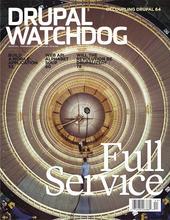Magillah Gorilla for Sale
It is one thing to be brought into a project as a team player, where the project is managed or you are delivering a predefined piece of it. However, that is typically not the way things happen when doing work for a small business or an initial project which will result in a business launch.
The more challenging and demanding opportunities for a freelancer are those one-man top-to-tail projects: creating the whole megillah1. Here is a brief look at the steps that could give the poor shlub2 a fighting chance.
- Initial Meeting: The client transfers his vision to you. Determine what specifically makes or breaks its success.
Output: Management Summary: Mirror the client’s vision back to him in your own words, for validation.
- Reference site(s): Ask the client to point to sites exemplifying functionality that works and functionality that doesn’t.
Output: Create a spreadsheet that will contain a row for each function, and identify that function as either a launch requirement, nice to have for launch, post-launch, or unneeded.
- Conceptual design: Using the approved spreadsheet, decide what the site will look like.
Output: Some conceptual prototype, such as wireframes, storyboard, etc.
- Functional design: The details behind the elements of the conceptual design; how front-end elements should work, as well as the back-end functionality, business rules, and the seemingly small details (being able to print receipts with a receipt printer, accepting input from card-swipers, syncing with third-party applications, etc).
Output: Functional design document.
- Architectural design: With all the functionality designed, it’s time to determine the architectural stack that will support it. What is the caching strategy? What services will be required (
wget,cron,curl, configuration outside the Drupal docroot, specific versions for applications or services, etc)?Output: Architectural design document.
- Database design Of course, the Drupal schema has already been done for you, but there could well be additional tables needed, indexes defined, perhaps even the use of alternative databases, like MariaDB, NoSql, etc.
Output: Schema(s) supplemental to the core Drupal schema.
At this point, you have everything you need to determine effort and pricing. But as the client reacts to sticker shock by removing features or altering priorities, additional iterations may be needed.
- Artistic design It’s time to develop the design from which the page layouts, templates, CSS, and themes, will emerge. It may not be your responsibility to develop the artistic design, but merely to ensure that the design embraces the functional and conceptual designs.
Output: Artist comps, Photoshop files, etc.
- Hosting selection: Armed with the architectural design, it’s time to consider what hosting service will be used. What pieces are needed beyond the normal LAMP stack and Drupal? What access will be required (
ssh? cPanel?) and what granularity of control is needed?Output: Requirements list for the client to verify with the hosting service.
- Development: Naturally, this is where most of your time will be spent. I normally do my development locally, with a privately accessible test site for the client to use for review. I take the site offline unless I have something I want the client to review, otherwise he can get antsy not seeing any change.
- Customer testing: As page, widgets, and features progress, it’s good to have the client review them as soon as possible. There is no easy answer as to whether one should point at the agreement when the client rejects something that was done as designed. That said, certainly successful element/feature/page tests should be a foundation for an ultimate system test.
- Production environment readiness: It’s best to install the test environment on the production environment for readiness testing in advance. That could be difficult if the domain name cannot be used yet; not having it available could cause some things to fail. But for now, this is more a test of whether all the pieces on the architecture, and all the configuration settings for the LAMP stack (or whichever is being used), are correct and viable.
This is a greatly condensed, summarized, and simplified approach; nothing in Drupal development is ever one-size-fits-all. I hope it sparks your imagination and gives you a helpful framework with which to succeed.
1From the Yiddish megile, the scroll from which the story of Purim is read. Used to mean a long embroiled story. And yes, the source of the name for The Magilla Gorilla Show (in one episode he says, “Such a megillah over a gorilla.”)
2Yiddish, meaning a pitiful person.
